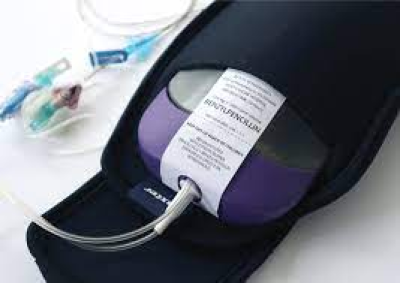Healthcare Special Interest Group
The focus of the Healthcare SIG is to promote the application of a human factors and ergonomics approach within the broader system through which healthcare is delivered.
Aims:
- Champion the application of human factors and ergonomics within healthcare
- Promote a systems approach aimed at optimising health and performance in the delivery of healthcare
- Provide a forum for members with an interest in healthcare to connect with one another
The Healthcare SIG meets three times / year with an invited speaker presenting at each. All events and notifications related to HFE in healthcare are communicated via the HFESNZ Newsletter.
If you are interested in joining the group, please contact fiona.trevelyan@aut.ac.nz
Webinars, 2022
OPIVA refined – a human-centred approach to outpatient intravenous antibiotic treatment
Kate Weatherly, Master’s thesis, AUT

Since its inception in America during the early 1970s, outpatient intravenous antibiotic (OPIVA) therapies have provided patients with live-saving intravenous antibiotics at home rather than in hospitals. OPIVA services typically involve six to eight weeks of intensive antibiotic treatment following a period of inpatient care. Kate’s research centred on an OPIVA service based out of the Waitematā DHB. Her research explored how the experiences of patients could be included in the design process to create innovative product solutions and improve the accessibility and ease of use of the products that made up the OPIVA treatment system.”
Exploring the impact of telehealth videoconferencing services on work systems for key stakeholders in New Zealand: a sociotechnical systems approach
Dr Nicola Green, PhD thesis, Massey University
 Using real-time videoconferencing to deliver healthcare services aims to improve access, quality, and the experience of receiving healthcare when professionals and patients are not based at the same physical location. Existing research has reported benefits of telehealth videoconferencing, yet there are difficulties with developing and sustaining services. My research investigated how the use of telehealth videoconferencing impacts the work done to provide or receive healthcare services in New Zealand. A human factors/ergonomics design approach informed the methodology, including the SEIPS 2.0 model. Using semi-structured interviews and contextual observations, I explored the perceptions of an expert telehealth group, healthcare providers, and patients. The research found that to enable telehealth videoconferencing to be a sustained practice, factors including new ways of working, change, human connection, what is best for patients, and equity need to be recognised. These factors also must be managed in a way that balances costs and consequence and that ensures fit across the work system.
Using real-time videoconferencing to deliver healthcare services aims to improve access, quality, and the experience of receiving healthcare when professionals and patients are not based at the same physical location. Existing research has reported benefits of telehealth videoconferencing, yet there are difficulties with developing and sustaining services. My research investigated how the use of telehealth videoconferencing impacts the work done to provide or receive healthcare services in New Zealand. A human factors/ergonomics design approach informed the methodology, including the SEIPS 2.0 model. Using semi-structured interviews and contextual observations, I explored the perceptions of an expert telehealth group, healthcare providers, and patients. The research found that to enable telehealth videoconferencing to be a sustained practice, factors including new ways of working, change, human connection, what is best for patients, and equity need to be recognised. These factors also must be managed in a way that balances costs and consequence and that ensures fit across the work system.
The PHIRES Tool kit - Patient Handling Incident Review of Systems
Prof Sharon Newman, Head of School, Psychology and Counselling at the Queensland University of Technology
 Patent handling tasks continue to cause a significant number of injuries within hospitals, despite a substantial investment in equipment, training and workspace design. The PHIRES Tool has been developed to help OHS practitioners investigate why the risk controls for patient handling failed to prevent an injury to staff and then identify effective strategies to prevent future similar injuries. The PHIRES Toolkit is based on best practice for accident investigation and systems thinking. This presentation will provide an overview to the PHIRES Tool, evaluation results of its implementation including practitioner reflections on the benefits of using a systems thinking approach to investigation patient handling injuries.
Patent handling tasks continue to cause a significant number of injuries within hospitals, despite a substantial investment in equipment, training and workspace design. The PHIRES Tool has been developed to help OHS practitioners investigate why the risk controls for patient handling failed to prevent an injury to staff and then identify effective strategies to prevent future similar injuries. The PHIRES Toolkit is based on best practice for accident investigation and systems thinking. This presentation will provide an overview to the PHIRES Tool, evaluation results of its implementation including practitioner reflections on the benefits of using a systems thinking approach to investigation patient handling injuries.
